The iPhone 5s Review
by Anand Lal Shimpi on September 17, 2013 9:01 PM EST- Posted in
- Smartphones
- Apple
- Mobile
- iPhone
- iPhone 5S
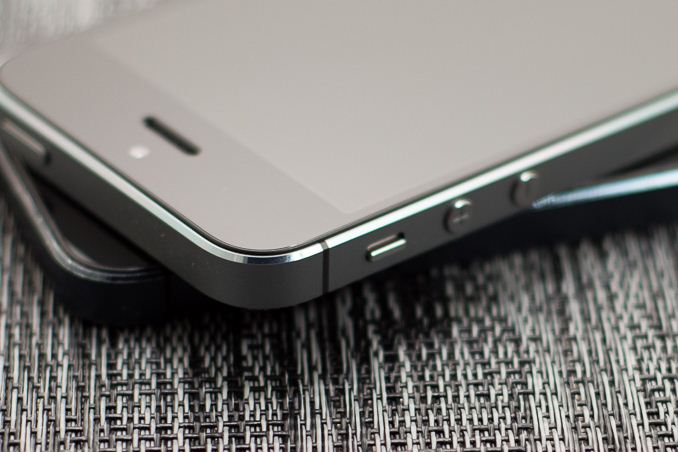
For much of the iPhone's life Apple has enjoyed a first-mover advantage. At the launch of the first iPhone, Steve Jobs expected the device and OS would give it a multi-year head start over the competition. Indeed that's how the market played out. Although Android was met with some early success, it wasn't until well after the launch of the first Android devices that we started seeing broad, mainstream acceptance of the platform. The iPhone bought Apple time, and together with the iPad it brought Apple a tremendous amount of profit over the years. The trick of course is turning a first-mover advantage into an indefinitely dominant market position, a difficult task when you're only making one device a year.
Today we find Apple in a very different position. The iPhone is still loved by a very loyal customer base, but the competition is much stronger than it was back in 2007. The modern smartphone market has also evolved. When Apple introduced the original iPhone with its 3.5" display, Steve called it "giant" on stage. Today even HTC's One mini ships with a 4.3" display.
Last year we saw Apple begin to address the changing landscape with the iPhone 5. The 5 saw Apple moving to a thinner, lighter chassis with much better internals and a significantly larger display. While there is market demand for Apple to do the same again, and move to an even larger display, there are some traditions Apple is sticking to. In this case, it's the tradition of the S-update.
The iPhone 5s continues Apple’s tradition of introducing a performance focused upgrade for the last year of any new chassis design. The first time we encountered an S-update was with the 3GS, which took the iPhone away from its sluggish ARM11 roots and into the world of the Cortex A8.
The next S-upgrade came with the iPhone 4S: Apple’s first smartphone to use a dual-core SoC. At the time I remember debate over whether or not a performance upgrade alone was enough to sell a new device, especially one that didn’t look any different. I’m pretty much never happy with the performance I have, so I eagerly welcomed the new platform. Looking back at the iPhone 4 vs. 4S today, I’d say the investment was probably worth it. In preparation for this review I threw iOS 7 on every iPhone that would support it, dating back to the iPhone 4. In my experience, the 4 is a bit too slow running iOS 7 - the 4S really should be the minimum requirement from a performance standpoint.
That brings us to the iPhone 5s, the third in a list of S-upgrades to the iPhone platform. Like the S-devices that came before it, the iPhone 5s is left in the unfortunate position of not being able to significantly differentiate itself visually from its predecessor. This time around Apple has tried to make things a bit better by offering the 5s in new finishes. While the iPhone 5 launched in silver and black options, the 5s retains silver, replaces black with a new space grey and adds a third, gold finish.
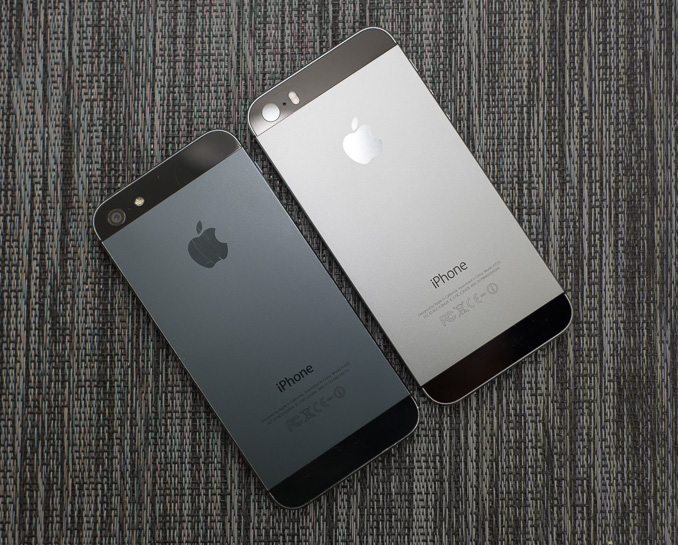
old black iPhone 5 (left) vs. new space grey iPhone 5s (right)
I was sampled a space grey iPhone 5s, which worked out well given my iPhone 5 was black. The new space grey finish is lighter in color (truly a grey rather than a black) and has more prominently colored chamfers. The move to a lighter color is likely to not only offer a little bit of visual differentiation, but also to minimize the appearance of scuffs/scratches on the device. My black iPhone 5 held up reasonably well considering I carry it without a case, but there’s no denying the fact that it looks aged. Interestingly enough, I never really got any scratches on the back of my 5 - it’s the chamfers that took the biggest beating. I have a feeling the new space grey finish will hold up a lot better in that regard as well.
The addition of a gold option is an interesting choice. Brian and I saw the gold iPhone up close at Apple’s Town Hall event and it really doesn’t look bad at all. It’s a very subtle gold finish rather than a gaudy gold brick effect. I think gold is likely the phone I’d opt for simply because it’d be very different than everything else I have, but otherwise space grey is probably the best looking of the three devices to me.
Along with the new finishes come new leather cases to protect the 5s. These cases are designed and sold by Apple, and they are backwards compatible with the iPhone 5 as well. Apple calls them leather cases but I'm not entirely sure if we're talking about real leather here or something synthetic. Either way, the new cases feel great. They've got a very smooth, soft texture to them, and are lined with a suede like material.
The new cases don't add a tremendous amount of bulk to the device either. The cases are available in 5 different colors and retail for $39:
I was sampled a beige case and have been using it non-stop for the past week. I really like the case a lot and it did a great job protecting the 5s over the past week while I was traveling. I took all of the photos of the review device after I returned home from traveling, but thanks to the case the device still looked as good as new. If you're considering one of these cases you might want to opt for a darker color as the edges of my case started to wear from constantly pulling the phone out of my pockets:
If you're fine with the distressed leather look then it's not a concern, but if you're hoping to keep your case pristine you may want to look at other cases. If you want a more affordable & more rugged option, Brian turned me on to the Magpul Field case which should work perfectly with the iPhone 5s.
Since the 5s is an S-upgrade, the chassis remains unchanged compared to the iPhone 5. The 5s’ dimensions are identical to that of the iPhone 5, down to the last millimeter of size and gram of weight. Construction, build quality and in-hand feel continue to be excellent for the iPhone 5s. Despite the diet the iPhone went on last year, the 5/5s chassis is still substantial enough to feel like a quality product. I remember criticisms of the iPhone 5 at launch, saying that it felt too light. Now going back and holding an iPhone 4S, it feels like the very opposite is true - the 4S was too heavy
The iPhone 5s design remains one of the most compact flagship smartphones available. The move to a 4-inch display last year was very necessary, but some will undoubtedly be disappointed by the lack of any further progress on the screen dimension front. A larger display obviously wasn’t in the cards this generation, but I have a strong suspicion Apple has already reconsidered its position on building an even larger iPhone. Part of the problem is the iPhone’s usable display area is very much governed by the physical home button and large earpiece/camera area at the top of the device. Building a larger iPhone that isn’t unwieldy likely requires revisiting both of these design decisions. It’s just too tall of an order for a refresh on the same chassis.
Brian often talks about smartphone size very much being a personal preference, and for many the iPhone 5 continues to be a good target. If you fall into that category, the 5s obviously won’t disappoint. Personally, I would’ve appreciated something a bit larger that made better use of the front facing real estate. The 5s’ width is almost perfect for my hands. I could deal with the device being a little larger, with the ideal size for me landing somewhere between the iPhone 5 and the Moto X.
It remains to be seen the impact display size has on iPhone sales. Anecdotally I know a number of die hard iPhone users who simply want a larger display and are willing to consider Android as a result. I still believe that users don’t really cross shop between Android and iOS, but if Apple doesn’t offer a larger display option soon then I believe it will lose some users not because of cross shopping, but out of frustration.
As a refreshed design, the iPhone 5s carries over all of the innovations we saw in the 5 last year. The iPhone 5s features the same Lightning connector that debuted on the iPhone 5, and has since been extended to the iPad lineup as well as the new iPods.
As with all other S-upgrades, the biggest changes to the iPhone 5s are beneath the aluminum and glass exterior. The 5s’ flagship feature? Apple’s new A7 SoC. The A7 is the world's first 64-bit smartphone SoC, and the first 64-bit mobile SoC shipping in a product (Intel’s Bay Trail is 64-bit but it won’t ship as such, and has yet to ship regardless). In addition to the new 64-bit SoC Apple upgraded both cameras in the iPhone 5s and added a brand new fingerprint sensor called Touch ID. Of course the iPhone 5s is one of the first new iPhones to ship with iOS 7 from the factory.
| Apple iPhone 5 | Apple iPhone 5c | Apple iPhone 5s | |
| SoC | Apple A6 | Apple A6 | Apple A7 |
| Display | 4-inch 1136 x 640 LCD sRGB coverage with in-cell touch | ||
| RAM | 1GB LPDDR2 | 1GB LPDDR3 | |
| WiFi | 2.4/5GHz 802.11a/b/g/n, BT 4.0 | ||
| Storage | 16GB/32GB/64GB | 16GB/32GB | 16GB/32GB/64GB |
| I/O | Lightning connector, 3.5mm headphone | ||
| Current OS | iOS 7 | ||
| Battery | 1440 mAh, 3.8V, 5.45 Whr | 1507 mAh, 3.8V, 5.73 Whr | 1570 mAh, 3.8V, 5.96 Whr |
| Size / Mass | 123.8 x 58.6 x 7.6 mm, 112 grams | 124.4 x 59.2 x 8.97 mm, 132 grams | 123.8 x 58.6 x 7.6 mm, 112 grams |
| Camera |
8MP iSight with 1.4µm pixels Rear Facing 1.2MP with 1.75µm pixels Front Facing |
8MP iSight with 1.4µm pixels Rear Facing 1.2MP with 1.9µm pixels Front Facing |
8MP iSight with 1.5µm pixels Rear Facing + True Tone Flash 1.2MP with 1.9µm pixels Front Facing |
| Price | $199 (16GB), $299 (32GB), $399 (64GB) on 2 year contract | $99 (16GB), $199 (32GB) on 2 year contract | $199 (16GB), $299 (32GB), $399 (64GB) on 2 year contract |
The iPhone 5s also breaks with tradition in a couple of ways. The 5s is the first iPhone in recent history to not be offered up for pre-order. Apple expects demand for the iPhone 5s to severely outstrip supply, and as a result won't be accepting pre-orders on the 5s.
The other big change is what happens to the previous generation iPhone. In the past, Apple would discount the previous generation iPhone by $100 on-contract and continue to sell those devices at low capacity points. A two-generation old iPhone was often offered for free on-contract as well. This time, the iPhone 5s replaces the iPhone 5 at the high end, but the iPhone 5 ceases production. Instead, the 5 is replaced with a cost reduced version (the iPhone 5c). As the glass & aluminum iPhone 5/5s chassis likely doesn't scale well in price, coming up with a new polycarbonate design for slightly lower price points makes sense. I have written a separate piece on the iPhone 5c as I have more than enough to talk about with the iPhone 5s in this review.
I'll start with the big ticket item: Apple's 64-bit A7 SoC.


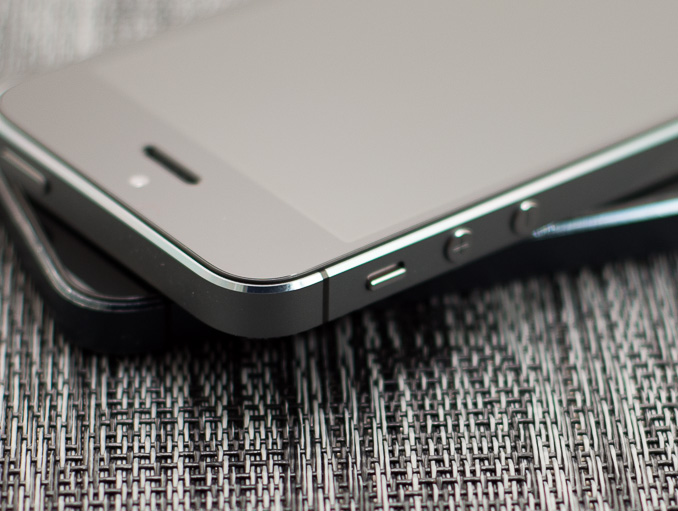
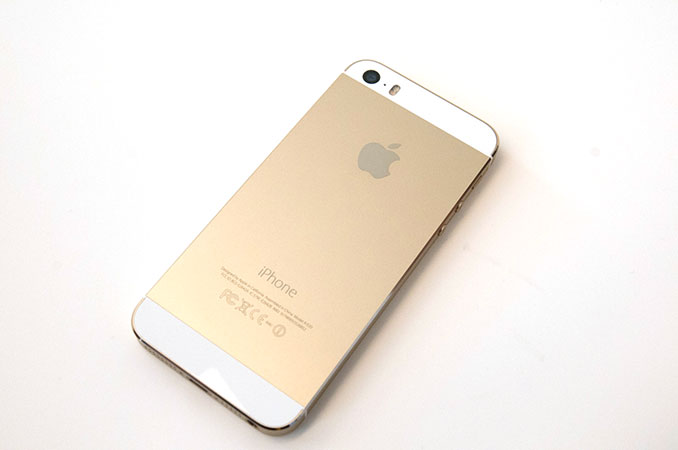
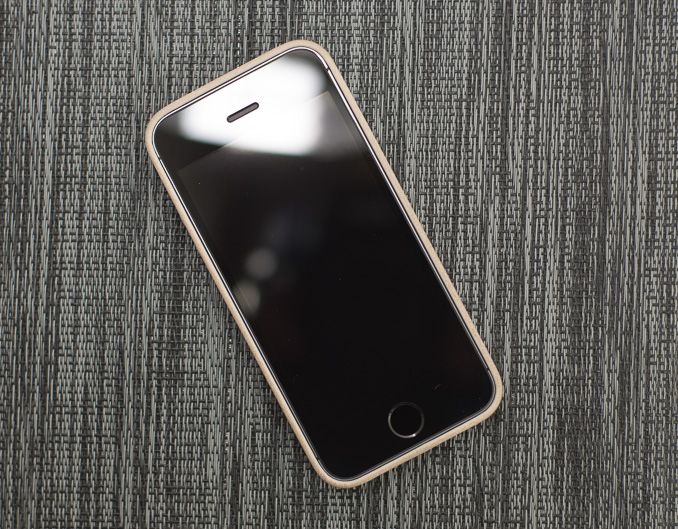
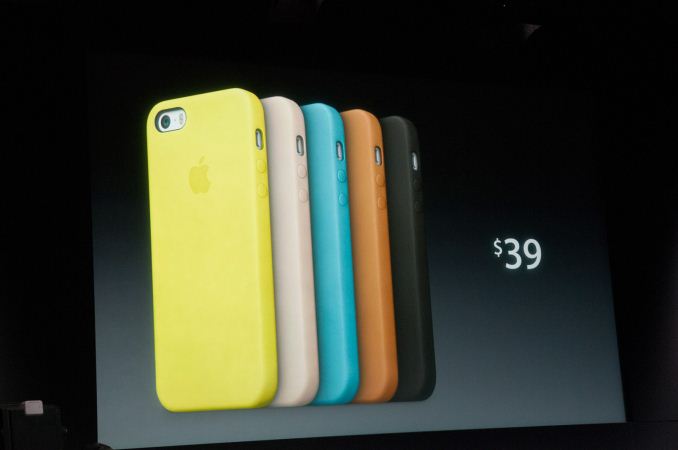
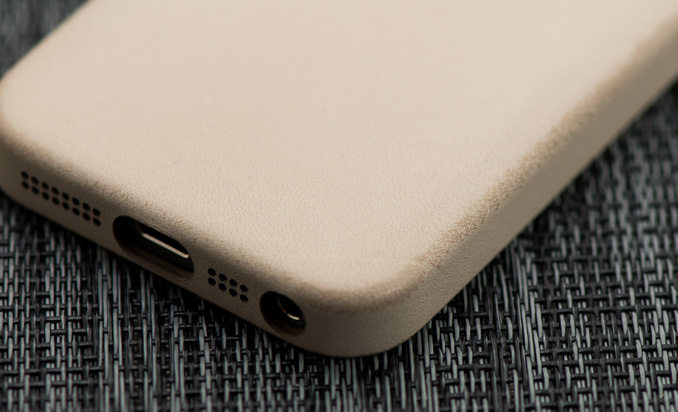
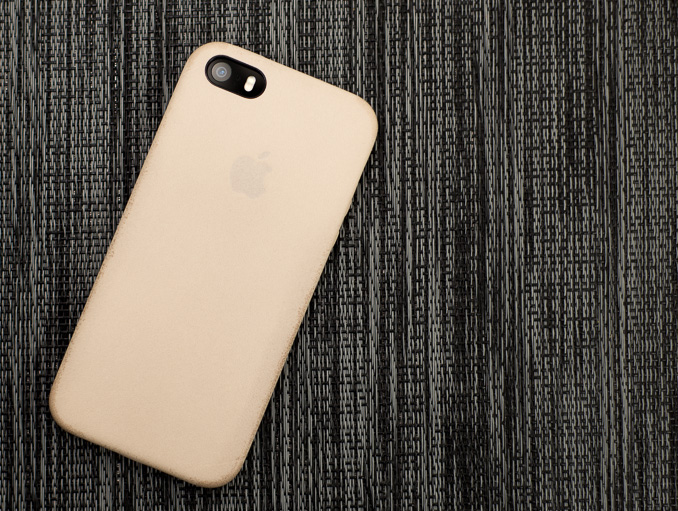








464 Comments
View All Comments
BrooksT - Wednesday, September 18, 2013 - link
Nobody will disagree because you've completely destroyed your credibility by insulting the credibility, integrity, and competence of the reviewer, the site, and Apple because the evidence doesn't conform to your speculations and bias. You are not to be taken seriously, and at this point I think everyone sees that.Post evidence of this conspiracy or STFU.
ddriver - Thursday, September 19, 2013 - link
How a whiff of reality for you - my credibility is and has not been on the line on this one. You don't know who I am, you don't know my credentials. This is not the case for Anand, even if I am right he is not in the position to admit to compiling the review in a manner that creates an unrealistically good presentation of a product, because unlike for me, that would be a huge credibility calamity for him. If anything, his responses are very "political" carefully dancing around the pivot points of my concerns. While his response did partially bring light to a few of my concerns, my key points remain valid - the article continues to not compare A7 with ARMv7 head to head in the sole native CPU benchmark present in the article, "CPU performance" was not renamed to JS performance or moved to browser performance or something like that. See, just because he didn't agree with my points and admit to being biased does not mean I am wrong and that is not the case, considering he is not in the position to do that. I didn't really expect anything more or less than the same "carefully dancing" answer as the article itself, my main motivation was to show him that not all AT readers are incapable of reading between the lines, for the sake of future articles, I did not expect that he would make any revision to the article at hand. Honesty is for those who have nothing to lose, and while his credibility is no the line, my isn't, make the conclusions, if you can ;)CyberAngel - Thursday, September 19, 2013 - link
Don't worry! I believe you...conditionally!I put it this way: I greatly doubt that the tests would reveal any points that are less than favorable the Apple. ANY company would do the same: promote the best parts and highlight the strength of the product.
akdj - Thursday, September 19, 2013 - link
"You don't know who I am, you don't know my credentials."I'm not sure anyone here is interested---you've already made clear you're a conspiracy theorist, that you believe Apple is paying off reviewers, that you disrespect folks MUCH more intelligent than yourself when it comes to chip architecture...and that your "main motivation was (Is) to show him that not all AT readers are incapable of reading between the lines". You've shown NO one ANYthing substantiated. You continue to argue baseless facts and accuse respected individuals and groups/teams of intelligent members of being bias towards Apple. Nothing in this review supports your claims---NOTHING! And, as I pointed out earlier---even the biggest anti-apple sites are applauding Apple's efforts with this SoC effort.
You're in the minority---and to be so vain that we would care about who you are and what your credentials are is silly. It sounds to me like you're a 17 year old with a decent vocabulary and not enough paper in the pocket to pick up an iPhone 5s for yourself. But...what do I know. I don't know you, your credentials...or how you lean politically, nor do I care.
IMO---you're an insult to the entire Anand crew. I'm not sure why I continue to read your responses, they're all the same, just worded differently. Again...you're in the (extreme) minority. You're certainly not an engineer, chip designer, app developer or technological guru---if you were, you would understand the feat Apple has achieved with this SoC architecture.
J
Nurenthapa - Friday, September 20, 2013 - link
I've been enjoying reading this in China, but you, sir, are really annoying me with your sniveling drivel. You have an axe to grind and simply won't shut up. Hope you disappear from this forum. BTW, I use a HTC One and iPad 2, and occasionally my old original 2007 iPhone. I love IOS and iPhones, but won't be buying one until they come out with a somewhat bigger screen.oryades - Wednesday, September 18, 2013 - link
Intel, now Apple, the same featured reviews.edward kuebler - Wednesday, September 18, 2013 - link
We are talking about 64 bits too much. The story is new instruction set in ARMv8. Instead complicating the hardware for backwards compatibility (e.g. look at x86 still supporting 16bit code) they wrote a new instruction set faster and less energy demanding. There is still ARMv7 compatibility, but the 64bit mode is independent. And the thing is, once you redesign your architecture, why not go 64bit? what´s the point of staying 32 bit? Moving more data is both slower and faster. More and wider registers help compiler optimizations and media decoding. I didn't get all this “cunning deceitful conspiracy” feeling you talk about. Staying in 32 bit land, *that* would keep me guessing.Anand Lal Shimpi - Wednesday, September 18, 2013 - link
Our browser based suite (stressing js/HTML5 and other browser based workloads) remains unchanged from all of the other mobile SoC reviews we've done. There's no way of getting around the software differences on these mobile devices as you buy hardware+software together. Unfortunately it's still our best option for non-GPU cross platform comparisons, there just aren't many good cross platform CPU tests.I called out the inclusion of hardware accelerated AES/SHA when referencing those tests, there were no attempts to hide that fact. The fact remains that those algorithms will see a speedup on ARMv8 hardware because of those instructions. Note this is no different than when we run the TrueCrypt benchmarks on AES-NI enabled processors vs. those that don't have it (e.g. http://images.anandtech.com/graphs/graph5626/44765...
Apple provided absolutely zero guidelines on how the review was to be conducted. The only stipulations were around making sure we didn't disclose the fact that we had devices. In fact, most manufacturers don't - at least not with us. Whenever there are any stipulations presented, we always disclose them on the site (e.g. see our early look at Trinity desktop performance).
Krait implements ARMv7, so that's 64-bit wide registers for its NEON units. It expanded the width of the execution units, but the registers themselves have to adhere to the ARMv7 ISA.
I think we explained why 64-bit makes sense (doing so at the last minute doesn't make sense, immediate SIMD/Crypto perf increases today, and helps build up the ecosystem), and even highlighted cases where a performance degradation does happen (see: Dijkstra tests). Keep in mind that iOS has always erred on the side of being more thrifty with RAM to begin with. I would like to see more but I don't know how necessary it is today.
Take care,
Anand
ddriver - Wednesday, September 18, 2013 - link
Anand, maybe you should hire a developer to write native cross platform benchmark tools. This is the only way to avoid all caveats like sponsored exclusive optimizations, different implementations, eliminate unrealistic low footprint synthetics, "selective compilers" (*cough Intel*) and whatnot. Considering the amount of reviews you are doing and the fact that C/C++ compilers have caught up with ARM for a long time, this is nothing hard and something that entirely makes sense, especially relative to using different JS engine implementations to measure CPU performance. JS should go in the "browser" department, not CPU performance.According to wikipedia, Krait implements 128bit SIMD, so maybe that is a mistake on wikipedia's behalf?
I still think encryption results belong in their own chart, and have no place in a chart that is supposed to be indicative of the integer performance delta between 32 and 64bit execution modes. Even with the clarification you made, it creates an unrealistic impression, not to mention some people skimp over the text and only look at the numbers. Encryption is encryption, integer performance is integer performance. Why mix the two (except for the reason I already mentioned and you deny)?
I wish you'd reflected a bit on the marketing aspect of the transition to 64, considering how much apple is riding it this time around. No one argues 64bit is good and more performance is good, but this brings up the issue of the particular implementation, e.g. a fast chip with only a single gigabyte of ram, and how will that play out with an actual performance demanding real world application.
Thanks for addressing my concerns.
Wilco1 - Wednesday, September 18, 2013 - link
ARMv7 has 32 64-bit SIMD registers but they can also be used as 16 128-bit SIMD registers. Modern CPUs like Cortex-A15 and Krait support many 128-bit SIMD operations in a single cycle, but not all operations are supported (such as double precision FP). ARMv8 has 32 128-bit SIMD registers and supports SIMD of 2 64-bit doubles.